Pantanal - Land of the Jaguar
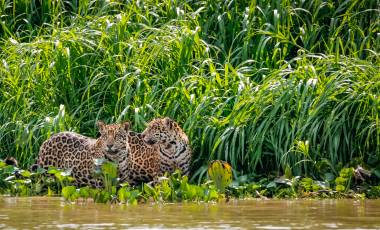
Shape your adventure: With Extensions, every beginning and ending is yours to create. Learn More.

When people talk about the Brazilian Pantanal, it usually doesn’t take long for someone to mention the fact that it’s among the most biodiverse places on the planet. But what does that even mean? It means that there are more different types of flora and fauna found in the Pantanal than just about anywhere else in the world.
Obviously, with such a wealth and variety of species, no blog-length wildlife guide can be 100% complete. So instead, we’ll look at a few popular favorites, as well as some rare animals that lucky visitors might have a chance of spotting.
The Mammals of the Pantanal
Visitors will definitely be rewarded with mammal sightings in the Pantanal. But most people will only see a small fraction of what’s out there. There are 236 different mammals species recorded in the Pantanal, including 75 small species, 68 medium-large species, and an incredible 90 different varieties of bats.
These are some of the most fascinating animals found in the Pantanal:
Capybara
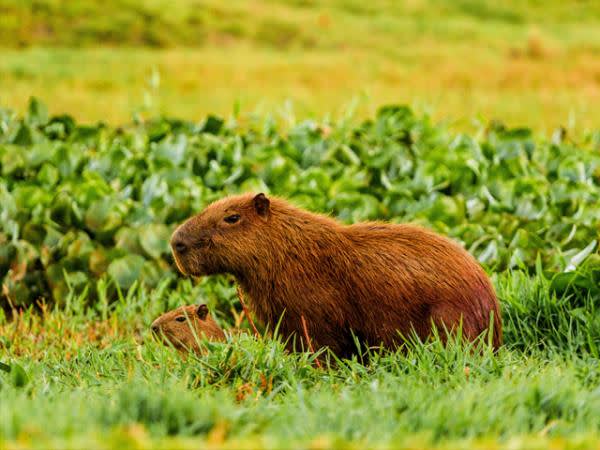
Typically weighing in around 75 to 150 lbs, the Capybara is the world’s largest rodent. But, from a distance, the animal looks much more like a cross between a hippo and a pig than it does an oversized rat. Capybara generally live in large groups of between 10-20 and spend much of their lifetime in the water, where they feed on aquatic vegetation.
Jaguar
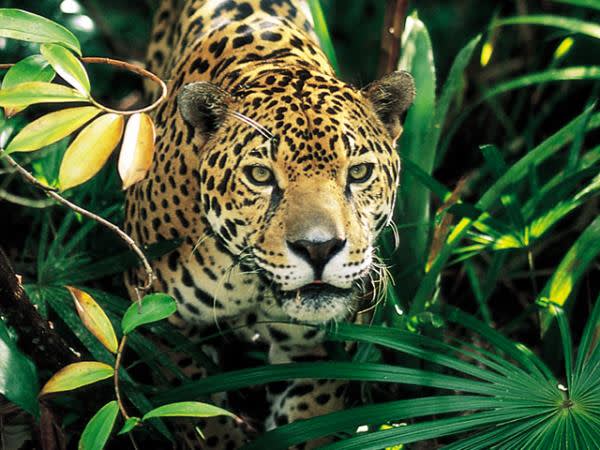
One of the area’s biggest draws is its high concentration of cats. The Jaguar is the third largest cat species on the planet, weighing between 130 and 220 pounds. There are only around 15,000 Jaguars left on the planet, which makes the high concentration in the Pantanal incredibly important. These large cats feed on a variety of meats, such as deer, capybara, peccary, agoutis, monkeys, and even tapir. There are three other cat species found in the Pantanal – Ocelot, Margay, and Jaguarundi – but they’re even more difficult to spot.
Exodus’ Land of the Jaguar tour spends four nights in Brazil – Meeting of the Waters State Park – where high jaguar density and increasing rates of habituation combine to give you a good chance at viewing these majestic cats in their natural wild habitat.
Tapir
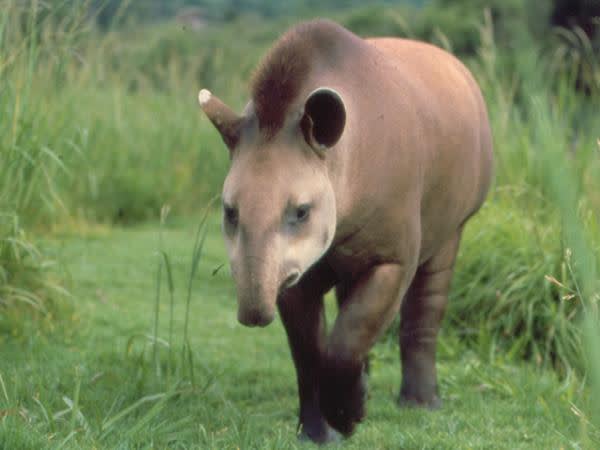
The Tapir is a favorite oddity for almost everyone lucky enough to spot one. But their erratic movement throughout the Pantanal makes them incredibly hard to find. They can show up almost anywhere… or nowhere. The Tapir looks like an Elephant crossed with an Anteater, but actually belongs to the same suborder as Rhinoceros. It’s also the largest animal in the Pantanal, weighing in at a hefty 500 to 800 pounds.
The Birds of the Pantanal
The Brazilian Pantanal is renowned as a birder’s paradise. Its 75,000 square miles of land is temporary or permanent home to a whopping 1,000+ endemic and migratory bird species.
These are a few of the more prominent ones:
Jabiru Stork
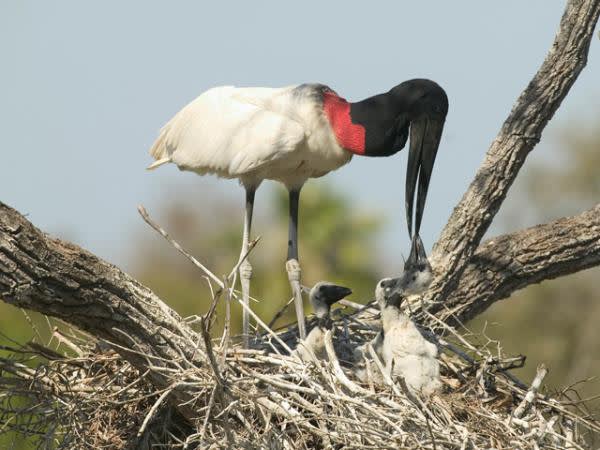
The beautiful (yet awkward) Jabiru is the second largest flying bird in the Americas after the Andean Condor. They can often be seen stomping away at muddy shallows of water in the Pantanal, hoping to force insects to the surface for feeding. The Jabiru can grow as tall as 55 inches and have a wingspan as large as nine feet.
Kingfishers
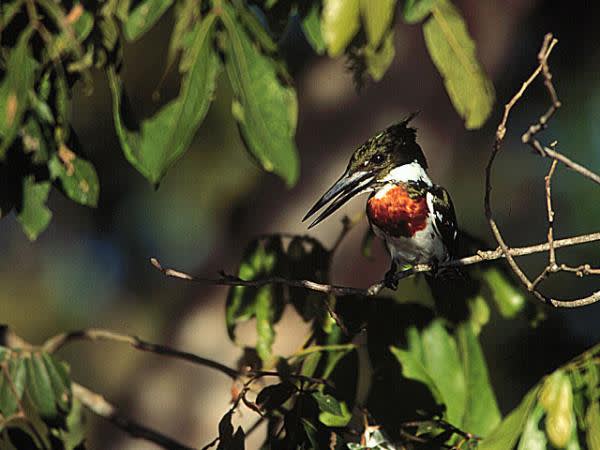
Perhaps the most prevalent of the Pantanal’s smaller bird species, there are 4 types of Kingfishers that spend time swooping the waters of the wetland region’s rivers and ponds.
The Amazon Kingfisher – green with an orange breast and standing up to a foot tall – is the largest and most common.
The Green Kingfisher is also a common sight, looking like a smaller (around seven inches) version of its aforementioned relative. Much more rarely spotted are the Green-and-Rufous and American Pygmy Kingfishers, which come in at about nine and six inches tall, respectively.
Macaws
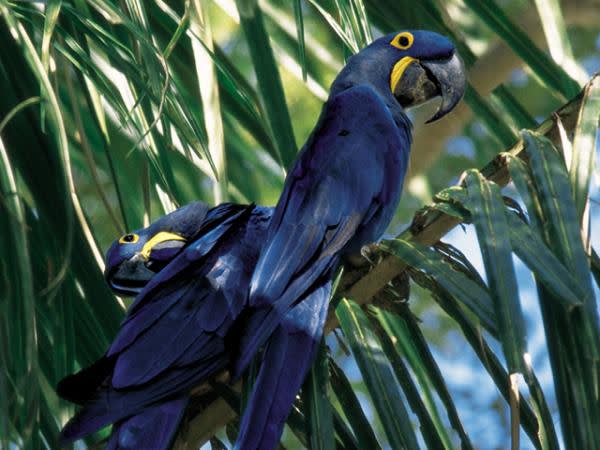
Two species of Macaw are frequently spotted in the Pantanal, although five may be found in the region. Visitors are most likely to see the beautiful Blue-and-Yellow Macaw, which grows to be about 30 inches tall. But if you’re lucky, you might also see the Hyacinth Macaw, which is a bright blue bird with yellow markings around the eye and beak. These birds are usually found in pairs, as Macaws generally mate for life.
Reptiles of the Brazilian Pantanal
As with the birds, reptiles are fairly ubiquitous in the Pantanal. There are around 80 different species of reptiles in the region, although you’ll likely only see four or five of them on a visit.
Caiman
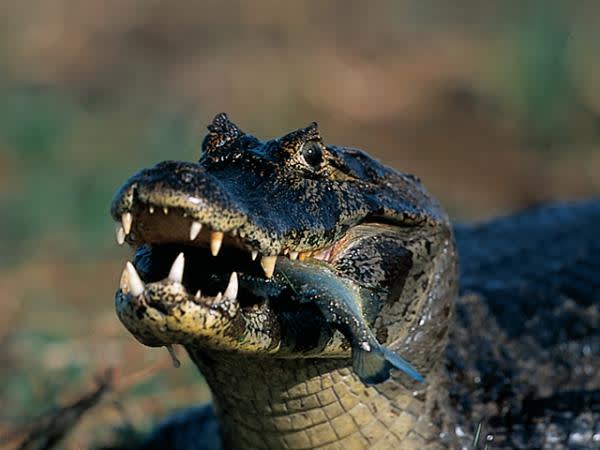
There are an estimated 20 million Caiman living in the Pantanal, which is about half the total human population of Canada. From extremely small babies to full-grown adults, they can typically be found lazing around nearly any pool of water in the wetlands. A member of the Alligatoridae family, the most prevalent species of Caiman is the Yacare, which grow up to eight feet in length. Amazingly, despite their size and imposing image, Caiman remain among the Jaguar’s favorite meal choices.
Caiman Lizard
A medium-sized lizard, the Northern Caiman Lizard is a great find if you can spot one. These beautiful snake-like lizards can grow up to four feet in length. What makes the Caiman Lizard so interesting is that it spends the vast majority of its life in the water, with a diet that consists almost entirely of snails.
Big-Headed Swamp Turtle
One of the few turtle species that survive in the region, the Big-Headed Swamp Turtle wasn’t discovered until 1984. As its name suggests, it’s known for its disproportionately large head. If you see a young one, you’d be forgiven for thinking it looks more like a cartoon character than a living animal. Growing to around nine inches in length, this bizarre beauty is arguably one of the Brazilian Pantanal’s most colorful characters.
